Tasteless coffee
« previous post | next post »
From "Signspotting around the world: Funny fails", a "Lonely Planet travel signs" feature of CNN Travel, I have selected an ensemble of four signs to illustrate different types of translation difficulties.
The first was spotted in a Beijing cafe:
Xǐláitè kāfēi 喜来特咖啡
That would be "Xǐláitè Coffee", with "Xǐláitè very much having the look of a foreign name.
As a matter of fact, Xǐláitè 喜来特 is the brand of a Chinese notebook computer and the Chinese company that makes it.
The English version of Xǐláitè 喜来特 is Selit, though what that might have to do with this Beijing cafe is beyond me, except that the sign pictured above vaguely has the look of the case of a Selit laptop computer, which is in many respects essentially a pseudo MacBook.
Here are the different types of coffees available:
I.
밀크 커피
① mil-keu keo-pi (RR)
② mil-k'ŭ k'ŏ-p'i (MR)
"milk coffee"
II.
연한 커피
① yeon-han keo-pi (RR)
② yŏn-han k'ŏ-p'i (MR)
"weak coffee" (in contrast to III. "strong coffee"; yeon-han / yŏn-han 연한 means "light; tender; thin")
III.
진한 커피
① jin-han keo-pi (RR)
② chin-han k'ŏ-p'i (MR)
"strong coffee" ( jin-han / chin-han 진한 means "dark; thick")
As for II. "tasteless coffee", Daniel Sou notes:
The Korean means "mild coffee," a very, very light tasting coffee. It is so "mild" that personally I don't even take it as coffee, but I believe and remember lots of Koreans in the 80-90's thought that this was the taste of coffee and they even called it "American style", compared to the dark, thick European style coffee. Maybe coffee was so expensive then that they couldn't use a lot.
The following is not directly related to the three types of coffee discussed above, but it constitutes an interesting Korean-English language interaction nonetheless. Namely, the Korean instant noodle "너구리" ("racoon dog" ① neo-gu-ri (RR) ② nŏ-gu-ri (MR)) is known as "RtA ramen" to some foreigners because the upside down image of 너구리 is thought to look like RtA.
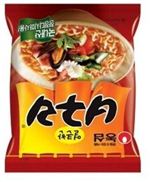
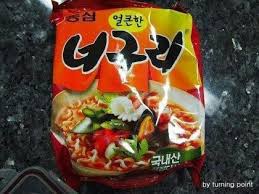
By the way, if you think that 너구리 (neo-gu-ri / nŏ-gu-ri) means "raccoon", not "raccoon dog", then you'd better read this: "Neoguri: raccoon or raccoon dog?"
We can move more quickly through the next three Lonely Planet travel signs.
From Suzhou, China:
zhùyì ānquán 注意安全
("pay attention to safety; take care; be careful; caution")
From Taipei, Taiwan:
I sincerely hope that they're not advertising what happens when you're in the dentist's chair! In truth, though, I can't find anything that would account for "Yelling" in the Chinese on the sign. I suppose that it is an English transcription of the proper name for the clinic and/or the dentist.
Finally, from the Karlštejn Castle in Prague, Czech Republic:
It would seem that the sign is disregarding its own prohibition, but what it really says (zákaz tlumočení) is "interpreting banned".
[Thanks to Bill Hannas, Haewon Cho, Bob Ramsey, Melvin Lee, and Fangyi Cheng]
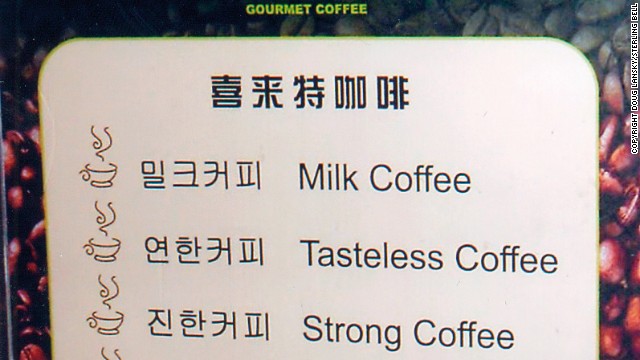

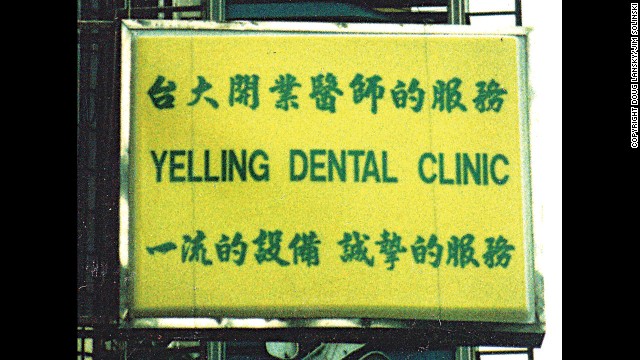
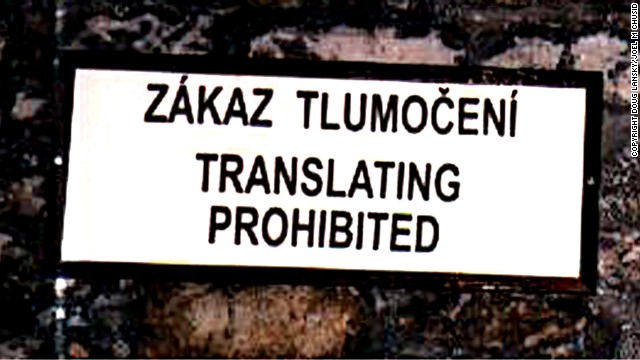
Ben Hemmens said,
October 3, 2014 @ 3:26 am
On the dentist, there is an orthodontist in Trieste who goes by the name of Dr. Furio Zurch.
Jen said,
October 3, 2014 @ 3:43 am
But *why* is interpreting banned? And so important that they have to put up a sign about it?
anhweol said,
October 3, 2014 @ 6:19 am
Czech visitor attractions sometimes charge more for a foreign-language tour than for a Czech-language one (rationally enough given the extra skills involved). If this is the case here, they may be trying to stop people sneaking onto cheaper Czech tours and then getting a friendly Czech-speaker to interpret informally, costing them revenue and potentially disrupting proceedings.
The language policy is a variation of just charging extra to foreign nationals based on ID (with concessions for permanent residents). As a foreigner who can understand Czech tours, but no longer qualifies for resident discounts, I have sometimes found it useful.
Alex Bollinger said,
October 3, 2014 @ 6:29 am
I've translated tours for my partner who doesn't speak English (I try to do it while walking between things, not while the guide is speaking). But if they really do have a problem with lots of people interpreting at the same time as the guide is speaking, I can see the utility of the sign.
leoboiko said,
October 3, 2014 @ 7:06 am
As a Brazilian, all coffee I tried on Japan was "tasteless coffee". But the teas were so incredibly good, I wasn’t even mad.
(And yes, americano around here is coffee-shop lingo for "watered-down coffee".)
Mark Hansell said,
October 3, 2014 @ 11:10 am
I used to live near the "Yelling Dental Clinic" in Taipei, it was always good for a chuckle. Somewhere nearby was a sign that made it clear that the name was based on 椰林 yélín "coconut grove", with the characteristic Taiwan -n vs. -ng confusion.
KWillets said,
October 3, 2014 @ 12:36 pm
연한 커피 is probably more related to the history of instant coffee in Korea.
Victor Mair said,
October 3, 2014 @ 12:49 pm
@KWillets
"…more related to the history of instant coffee in Korea."
Than to what?
Greg Malivuk said,
October 3, 2014 @ 1:41 pm
My understanding was that an Americano is watered-down espresso intended to approximate American style drip coffee.
KWillets said,
October 3, 2014 @ 1:49 pm
I'm not a coffee historian, but my understanding is that Koreans were exposed to instant coffee during the war and adopted it as "coffee" until espresso and full-bean coffee became popular around the early 2000's (there were other sources of full-bean coffee, but not popular). I believe the term 연한 커피 refers to the weak instant coffee-sugar-milk mixture that was popular in the past and is still sold in cans and vending machines.
Before 2000 there were some espresso cafes such as the one my brother-in-law started in the mid-90's, but it didn't take off. However nowadays everyone (in my wife's family) has coffee drippers and grinders.
Licia said,
October 3, 2014 @ 3:06 pm
In Milan, beware of long clothes!
Matt said,
October 3, 2014 @ 7:14 pm
Yeah, in Japan too "American" coffee is watered down and, well, not quite "tasteless," but… Apparently postwar US diner coffee made quite an impression worldwide.
Chris Kern said,
October 3, 2014 @ 8:11 pm
That being said, you can get good coffee in Japan. If you're drinking mass-market stuff like Key or Blendy it's not going to be good, but nobody expects that to be. That's like drinking only Folgers and then saying you can't get good coffee in America.
Jamie said,
October 4, 2014 @ 3:01 am
When I first lived in Japan (long before the chains like Stabucks, et al. arrived) coffee was almost always very strong, dark and rich (almost sweet) flavored.
hector said,
October 4, 2014 @ 3:44 pm
It's not that Americans can't get highly caffeinated or liquored up. They just consume a lot more water in the process. Perhaps rather than referring to their coffee and beer as "watered-down," we outsiders should just refer to them as "watered."